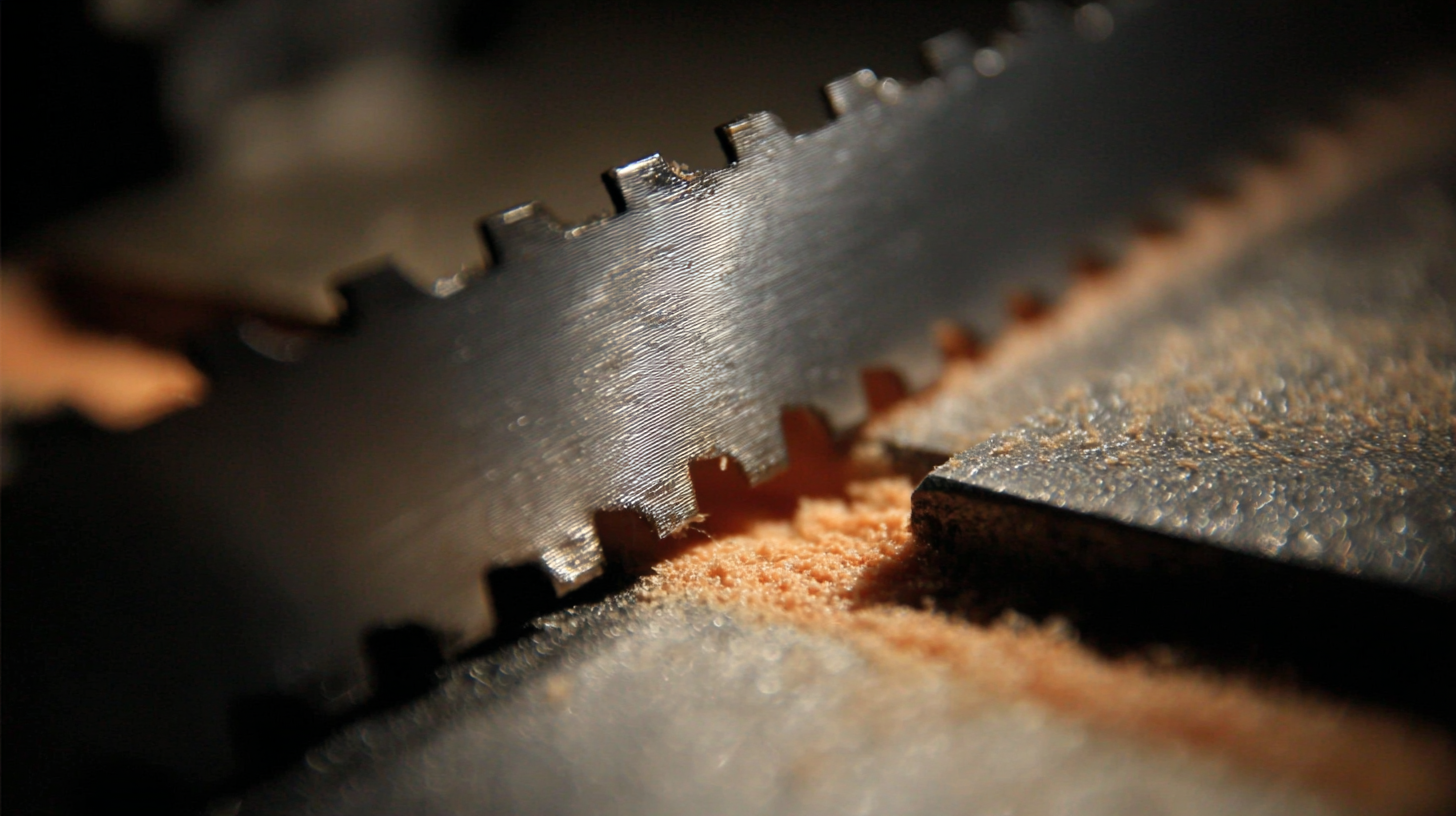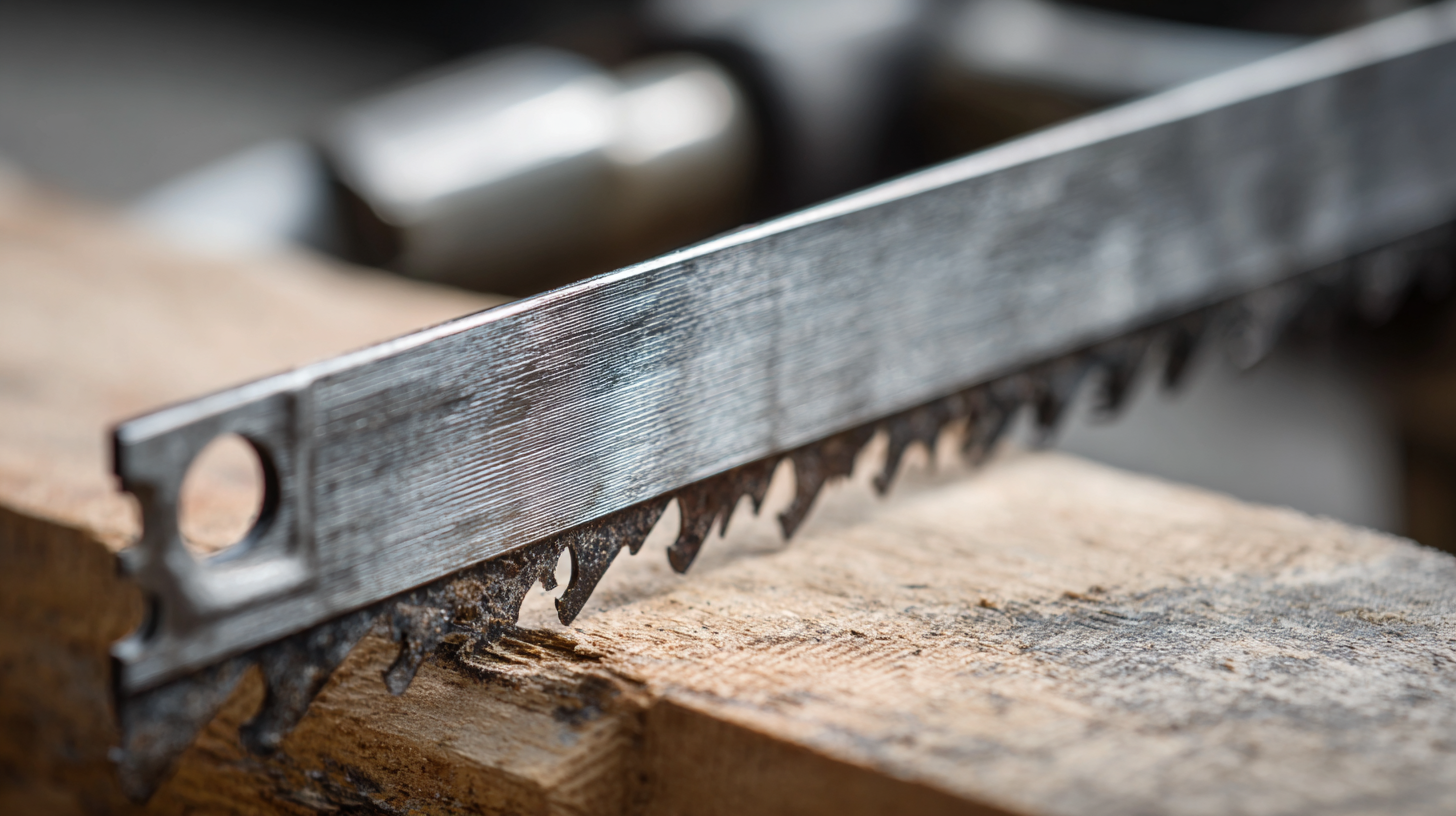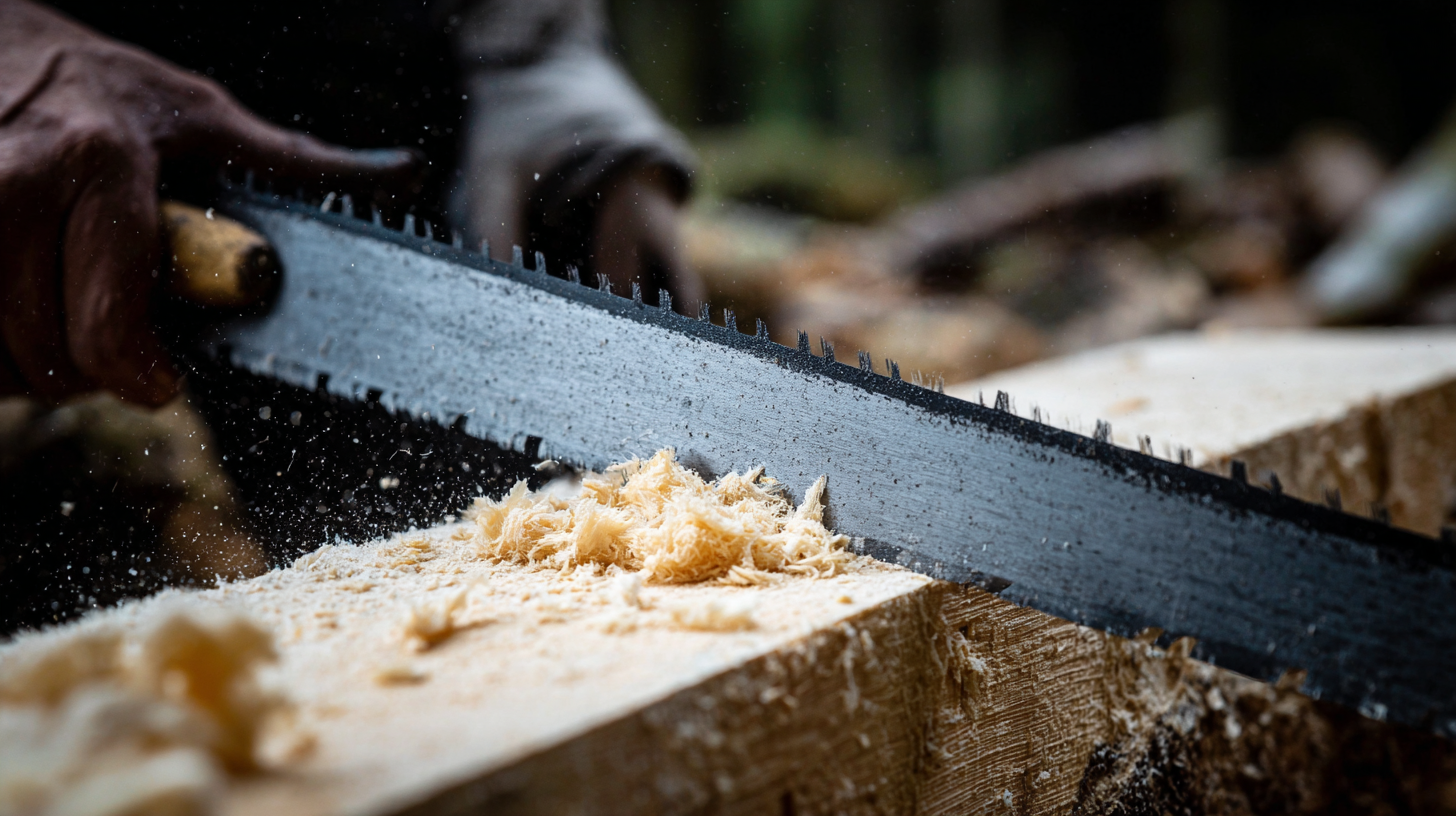7 Best High Speed Hacksaw Blades for Efficient Cutting
Table of Contents
- Choosing the Right Material for Your Hacksaw Blade
- Understanding Blade TPI and Its Impact on Cutting Speed
- Top 3 Brands Known for High Speed Hacksaw Blades
- Maintenance Tips to Extend the Life of Your Hacksaw Blades
- Comparing Bi-Metal vs. Carbide Tipped Hacksaw Blades
- Essential Safety Tips While Using High Speed Hacksaw Blades
- FAQS
- Related Posts
When it comes to cutting tools, picking the right blade can really make a difference in how efficient and precise your work turns out. And let's be honest, that couldn't be more true when you're dealing with High Speed Hacksaw Blades—they’re built to handle tough jobs quickly and smoothly. Here at Wenzhou Yichuan Tools Co., Ltd., we've been around since 2003, and we truly get how important it is to have top-quality electric tool accessories. Our experience in making jigsaw blades, reciprocating saw blades, and planers has made us a trusted name for both pros and DIYers alike. In this post, we’re gonna look at seven of the best High Speed Hacksaw Blades out there—what makes each of them stand out and why they’re worth considering. Whether you’re in a busy workshop or out on a remote job site, these blades are sure to boost your cutting game and handle all kinds of tasks with ease.

Choosing the Right Material for Your Hacksaw Blade
When you're picking out high-speed hacksaw blades, it's really important to choose the right material. It can make a big difference in how well your cuts go, especially across different jobs. The most common options you'll see are high-carbon steel, bi-metal, and cobalt steel. High-carbon steel blades are pretty flexible and don’t break as easily, so they're great for general cutting tasks. But if you're working with tougher stuff like metal or PVC, bi-metal blades are usually the way to go—they hold up better and can handle high speeds without going dull too quickly.
Cobalt steel blades are also a solid choice, especially for heavy-duty jobs. They’re harder and can handle heat better, so you get smoother cuts even through tougher materials. If you’re juggling all kinds of materials, it’s smart to have a few different blades on hand. Each one is designed for specific types of cutting, so knowing what each blade can do really helps you work more efficiently. Picking the right blade isn’t just about getting the job done faster—it also means cleaner cuts and safer operation overall.

Understanding Blade TPI and Its Impact on Cutting Speed
So, when you're trying to pick out the right hacksaw blade for high-speed cutting, understanding those teeth per inch (or TPI) numbers is kinda key. Basically, TPI tells you how many teeth are on the blade, and that can really affect how smoothly you cut and the kind of finish you get. According to the folks at the American National Standards Institute (ANSI), blades with a higher TPI—like somewhere between 12 and 32—are your go-to for cutting thinner stuff, like sheet metal or plastic. They give you cleaner, smoother cuts and tend to produce less waste. That said, they do tend to be a bit slower because those fine teeth stick to the material more carefully.
On the flip side, blades with fewer teeth—say, less than 10 TPI—are fantastic for chopping through thicker stuff, like steel or aluminum. There was a study in the Industrial Distribution journal that showed using an 8 TPI blade could actually crank up your cutting speed by almost 25%. That’s a pretty big deal when you're dealing with heavy-duty work, because the bigger gaps between the teeth help clear out material faster, making the job go quicker. So yeah, choosing the right TPI depends largely on what you’re cutting and how fast you want to get it done — it can really make a difference in how efficient and productive your work is.
Top 3 Brands Known for High Speed Hacksaw Blades
When you're working with high-speed cutting, the blades you pick really make a difference in how smooth and efficient things go. If you’re looking at the top brands out there, three actually stand out — Starrett, Lenox, and Bosch. Starrett’s blades are pretty famous for their precision; they’re super durable and cut like a charm, which is why most pros swear by them. Lenox blades are kinda the Swiss Army knives of the bunch—they’re versatile and usually made with a special bi-metal combo that gives them both strength and flexibility. Bosch, meanwhile, hits the mark with cutting-edge tech and quality. They often pack in some pretty nifty innovations that help you cut faster and cleaner.
Now, when you’re choosing a high-speed hacksaw blade, think about what you’re actually cutting. For example, bi-metal blades are awesome if you need to cut through tough metals. But if you’re working with softer stuff, high-carbon steel blades might do the trick better. Also, keep an eye on the tooth count—fewer teeth can make your cuts quicker, while more tiny teeth will give you a smoother finish. And don’t forget, taking a few seconds to clean and care for your blades can really make them last longer and keep them cutting like they’re brand new.
Maintenance Tips to Extend the Life of Your Hacksaw Blades
When you're trying to get the best performance out of high-speed hacksaw blades, good maintenance really makes all the difference in keeping them working well for a long time. A simple but super important tip is to make it a habit to check and give your blades a quick clean after each use. This little step can help stop metal shavings and debris from piling up, which can mess with your cuts and cause the blade to wear out faster. Also, don't forget to use the right kind of lubricant—this can really cut down on friction and overheating when you're cutting, helping your blades last way longer.
Another thing to keep an eye on is the tension of your hacksaw blades. If they're too loose, your cuts might get wonky and inefficient. On the flip side, over-tightening can make them more likely to break. So, it's a good idea to check and set the tension just right for smooth, clean cuts. And finally, when you're done, store your blades somewhere dry and safe—don’t leave them out where they can rust or get damaged. Keeping them in good shape means they’ll be ready for your next project without any hassle.

Comparing Bi-Metal vs. Carbide Tipped Hacksaw Blades
When you're trying to decide between bi-metal and carbide-tipped hacksaw blades, it’s really about understanding their unique features and how they perform. Bi-metal blades are pretty versatile—they combine high-speed steel with carbon steel, making them flexible yet durable. You’ve probably noticed they've become quite popular across different industries, and it’s no wonder—that market for bi-metal band saw blades is expected to grow a lot, reaching around USD 1,939 million by 2039, with a healthy annual growth rate of about 4.9%. It really highlights how effective they are at cutting through a variety of materials, which is why both hobbyists and pros tend to rely on them.
Now, on the flip side, carbide-tipped blades are known for their incredible cutting power—especially when it comes to tougher materials. The carbide tips really boost the blade’s lifespan and overall performance, making them a go-to choice for more demanding jobs. The market for these blades is also expanding, showing that people are leaning more towards high-performance tools. They come in different configurations like regular, hook, and skip tooth styles, so there's something for pretty much every cutting need, whether you're DIY-ing or working in a more industrial setting. Ultimately, picking between bi-metal and carbide-tipped blades really boils down to what you’re cutting, how fast you need it done, and how long you want the blade to last.
7 Best High Speed Hacksaw Blades for Efficient Cutting
| Blade Type | Material | Teeth Per Inch (TPI) | Cutting Speed (m/s) | Durability (Hours) | Ideal Materials |
|---|---|---|---|---|---|
| Bi-Metal | High-Speed Steel | 14 | 6.0 | 30 | Steel, Aluminum |
| Carbide Tipped | Carbide | 18 | 8.0 | 50 | Stainless Steel, Hard Plastics |
| Bi-Metal | High-Speed Steel | 24 | 7.5 | 35 | Plastics, Wood |
| Carbide Tipped | Carbide | 10 | 5.0 | 60 | Ceramics, Concrete |
| Bi-Metal | High-Speed Steel | 12 | 6.5 | 28 | Copper, Brass |
| Carbide Tipped | Carbide | 16 | 9.0 | 55 | Alloy Steels, High Hardness Materials |
Essential Safety Tips While Using High Speed Hacksaw Blades
When you're working with high-speed hacksaw blades, safety really should be your top priority. Cutting through tougher materials isn’t exactly a gentle process — it can kick up some dangerous debris and cause pretty strong vibrations. So, it’s super important to use your equipment properly. Always gear up with the right protective stuff — you know, safety goggles, gloves, ear protection — that sort of thing. Plus, make sure you’re holding the hacksaw tightly and standing in a stable position. Trust me, it makes a big difference when it comes to avoiding accidents. Interestingly, global demand for metal saw blades is expected to jump from $570 million in 2025 to around $868 million by 2032, which just highlights how serious safety measures are becoming more and more critical for everyone using these tools.
Also, don’t forget that taking good care of your hacksaw blades is key for both safety and getting the job done right. Regularly checking the tension and overall condition can prevent them from snapping unexpectedly — nobody wants that surprise. Using blades rated specifically for your material can really boost performance and keep things safe. With the market gearing up for a yearly growth rate of about 6.2%, it’s clear that investing in quality blades and playing by the safety rules isn’t just sensible — it’s essential for anyone in the game.
FAQS
: TPI stands for "teeth per inch," which defines the number of teeth on the blade and influences cutting efficiency and finish quality.
Blades with higher TPI (12-32 TPI) are better suited for cutting thinner materials and provide smoother cuts but result in slower cutting speeds. Conversely, blades with lower TPI (less than 10 TPI) cut thicker materials faster due to larger gullets that allow efficient chip removal.
The top brands known for high-speed hacksaw blades include Starrett, Lenox, and Bosch, each known for their unique strengths in precision, versatility, and innovation.
Bi-metal blades combine high-speed steel and carbon steel, offering flexibility and durability, which makes them effective for cutting various materials.
Carbide-tipped blades are ideal for cutting harder materials and are known for their superior cutting capabilities and longer lifespan in demanding applications.
When selecting a hacksaw blade, consider the material type you will be cutting, the appropriate TPI for the thickness of the material, and the specific cutting requirements for your task.
Yes, regular cleaning and maintenance of hacksaw blades can dramatically extend their lifespan and maintain cutting efficiency.
The bi-metal band saw blade market is projected to reach USD 1939.3 million by 2039, with a compound annual growth rate (CAGR) of 4.9%.
Carbide band saw blades come in various configurations such as regular, hook, and skip tooth, each catering to different cutting requirements.
A blade with fewer teeth can result in faster cuts, while a blade with finer teeth yields smoother finishes, impacting the overall quality of the cut.
Related Posts
-

Unmatched Quality Hacksaw Blades: Crafted in China for a Global Market
-

Navigating the 2025 Landscape: Innovations in Best Hacksaw Blade Double Sided Technology
-

7 Essential Factors to Consider When Choosing the Top Recip Saw Blades for Metal
-

Discover the Most Reliable Fine Hacksaw Blade Examples for Your Next Project
-

Global Buyers Discover the Excellence of 18 Inch Reciprocating Saw Blades from a Leading Chinese Manufacturer
-

Top Strategies for Choosing the Best 6 Inch Hacksaw Blades for Your Projects
Blog Tags:





